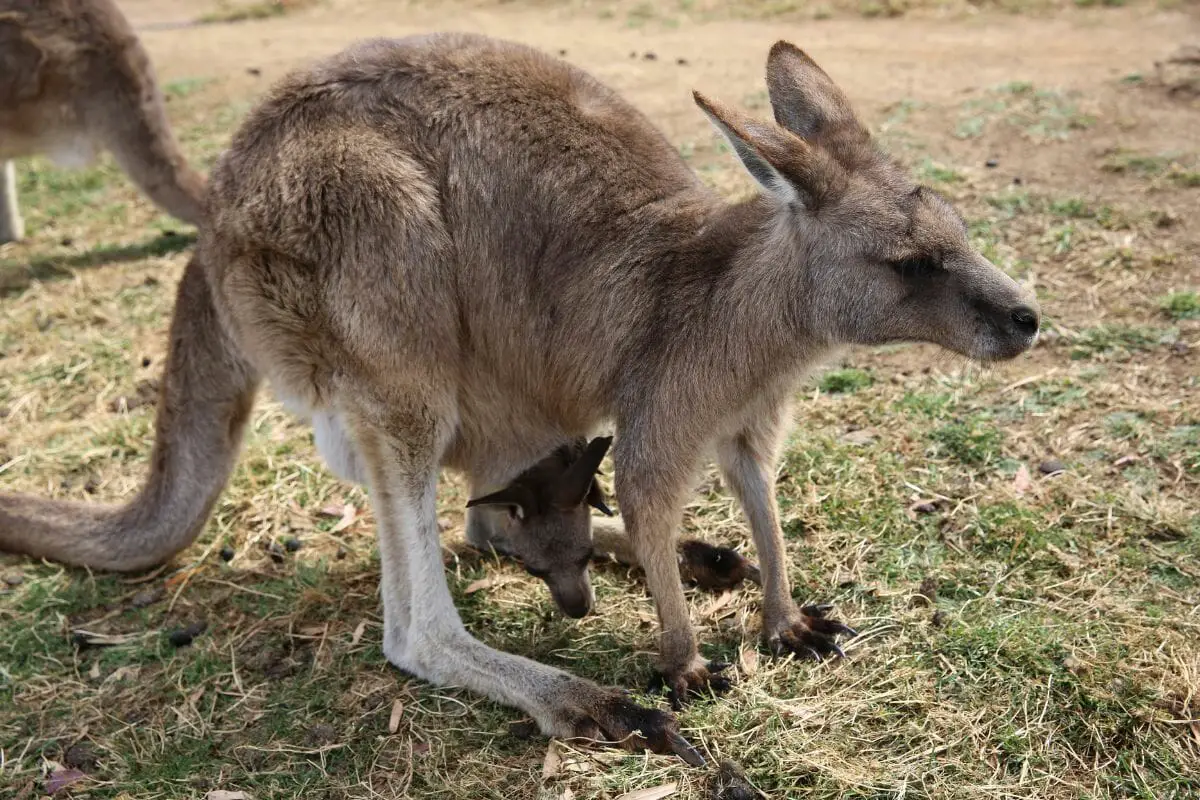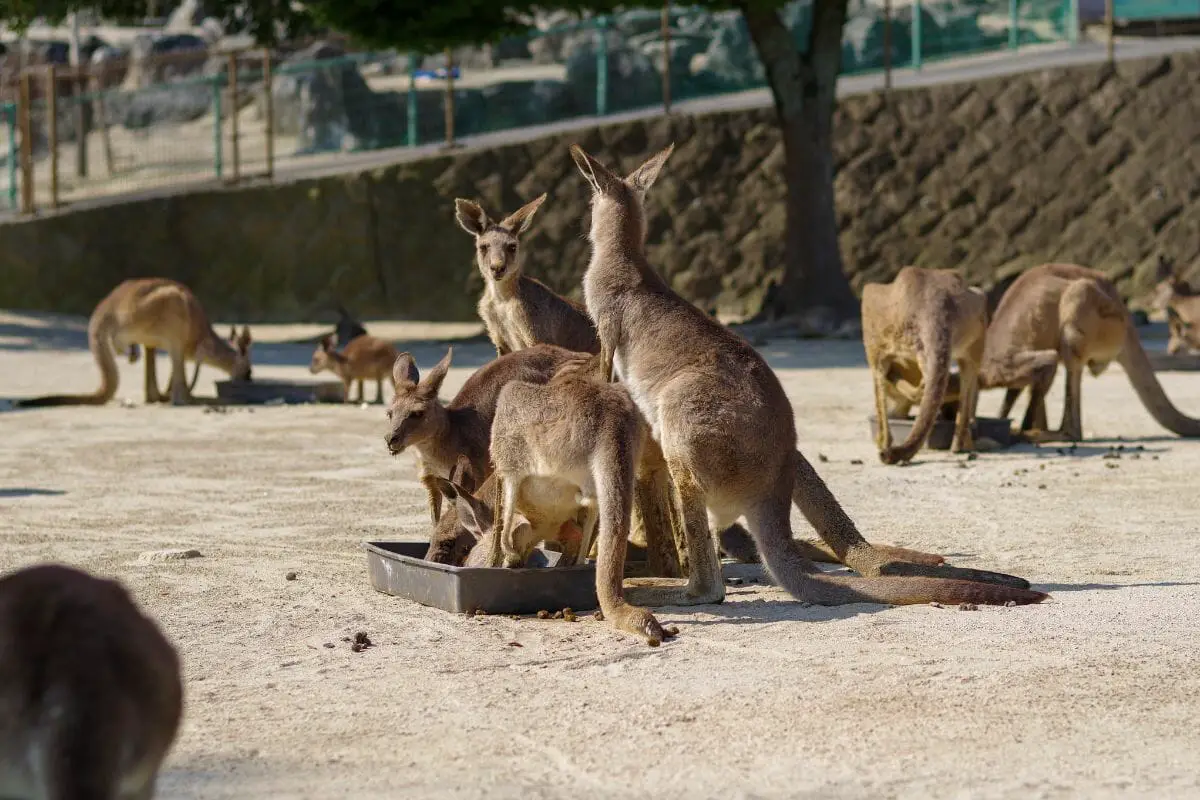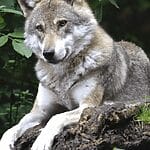Found in the eastern third of Australia, the Eastern Gray kangaroo is one of the largest kangaroo species in the country.

But how prevalent is the species within Australia, and just how many Eastern Grays are left in the wild?
The Range Of The Eastern Gray
While the Red kangaroo might be the most associated image of Australian wildlife, the Eastern Gray is the most commonly encountered kangaroo in the entire country, and is one of the most prominently dispersed species in the region.
Why Are They So Common?
There are many beliefs for why the Eastern Gray is so prominent and enduring – not to mention their placement over such a wide portion of the country.
One belief that scientists go back and forth on, is the popularized belief that the kangaroo population as a whole increased tenfold after the arrival of European settlers.
The belief behind this idea is that the dingo population significantly decreased after the arrival of the Europeans, who would shoot and kill them to protect livestock and children.
However, the validity of this claim has yet to be officially proven.
Another, more concrete reason for their enduring presence within the Australian wilderness is their sheer adaptability.
They have relatively simple and versatile dietary needs, consisting of grasses and shrubbery – which means they can exist within much of the country’s environmental areas.
However, their most common habitats tend to be wetter areas, where the plant life is lush and plentiful – such as coastal regions, woodlands, wetlands, and subtropical forests.
How Many Eastern Grays Are Left?
As of the current decade, the population of Eastern Grays in Australia is thought to be around 16 million – or 16,057,783 to be more precise.
How Have They Survived So Well?
Aside from having versatile diets, Eastern Gray kangaroos are also nocturnal and crepuscular. This means they are generally seen in the early morning, or at dusk, and generally frolic more at nighttime.
This is when they do the most of their eating, and during the hotter hours of the day they are generally found sleeping and resting in the shady forests of the regions they inhabit.
In many ways, this has made them more resilient, both to the dangers of the hot temperatures, but also to humans and predators, as they are generally out of sight during the main hunting hours.
Their nocturnal activities make them more elusive, and somewhat puts them out of sync with many of the dangers that would otherwise affect them.
Are There Physical Advantages?
Their size also protects them somewhat from most forms of predators, although they are still vulnerable to dingoes, humans, and some forms of large predatory birds – like the wedge tailed eagle.
However, many of the predators that would bother smaller animals are seldom a threat to the Eastern gray, which has in many ways helped their survival.
Males of the species generally stand around 6 feet and 7 inches, and weigh in at around 146 lbs, making them a sizable and risky meal for most smaller predators.
Reproduction & Pregnancy
Kangaroos also have high, successful rates of reproduction, and female kangaroos are generally permanently pregnant, other than the day they give birth.
This has helped to ensure the continuation of the species, despite predators, settlers, meat poaching, and all of the other environmental risks associated with life in the dangerous and hostile Australian outback.
What Do Eastern Grays Eat?
Based in their habitat of grassy, moist areas, the Eastern Gray has the same diet as most species of kangaroos – that is, one consisting of dry grasses, small shrubbery, and even some types of fungus.
This means that they aren’t expelling vital energy hunting, and meet their dietary patterns as continual grazers.

Are Eastern Grays Social?
Eastern Gray kangaroos are extremely social, gregarious creatures, who have open admission groups that are easy for outsiders to join.
While they generally congregate in small groups of three or four, they are known to merge with other groups in preferred eating spots, or for safety reasons when they are resting and sleeping during the hottest hours of the day.
Are They Competitive?
Eastern Gray kangaroos are competitive with one another – in the sense that they belong to an established dominance hierarchy.
This is generally a competition between the males, although female hierarchies also exist.
The most prominent within the hierarchy get the first choice of the food supplies, and the best choice of shady spots for resting and sleeping during the day.
However, kangaroos are not territorial creatures, meaning they do not compete for land with other groups of kangaroos, instead allowing them to come and go as they please, even joining their ranks during key, vulnerable times during the day – such as eating and sleeping times.
What Predators Do Eastern Grays Have?
Of course, the Eastern Gray still has its share of predators.
As mentioned earlier, two of those animals are the dingo and the wedge tailed eagle, but there are also several others that can prove dangerous (or even deadly) to the Eastern Gray.
Goannas
These large monitor lizards are generally carrion animals, meaning they feed on already dead carcasses.
However, in times of need they have been known to attack young kangaroos when they are unattended or separated from their mothers.
Humans
Humans are also a major predator for Eastern Grays. Kangaroo meat is a popular choice of food for many, even trumping beef and pork in some regions, as kangaroos are less disruptive to soil and farmland.
Kangaroo meat is a delicacy in many regions, where it is said to have a flavor palette similar to veal – very tender, rich, and gamey.
However, despite widespread hunting, the population still manages to thrive, aided perhaps by the requirement for official licenses for kangaroo hunting.
Domestic Dogs
With human settlers came domesticated dogs, which have historically posed a threat to the kangaroo population since their introduction.
While these animals seldom hunt kangaroos for their meat, they can be territorial when protecting farmland and property, and have been known to attack wild kangaroos when they come too close to their homes.
They are generally quicker than a kangaroo, and have sharper teeth and claws, meaning that one lucky strike is all they need to get the better of lone (see also: Animals That Are Loners)kangaroos.
Extinct Predators
Although now extinct, there were also many larger predators that once roamed mainland Australia – all of which hunted and fed on kangaroos for their meat.
Such examples include the Tasmanian tiger, the megalania (giant lizard), and the wonambi – a 10 feet long constricting snake found commonly throughout the country.
Final Thoughts
And there we have it, everything you need to know about the Eastern Gray Kangaroo, and their position within the animal kingdom of Australia.
As the most prominent species of kangaroo in Australia, the Eastern Grays are a common sight for tourists and locals alike, and are both a beloved native creature, a source of meat for some, and an animal that has become synonymous with the country and it’s national heritage.








